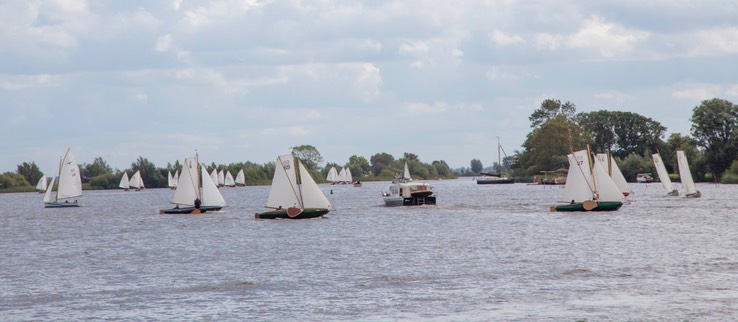 Sneek or “Snits", like the Frisians call it, is all about “scheepvaart”! If you think of sheep and methane now, you have got it wrong. It’s all about boats, of course!
Sneek or “Snits", like the Frisians call it, is all about “scheepvaart”! If you think of sheep and methane now, you have got it wrong. It’s all about boats, of course!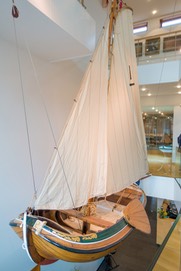
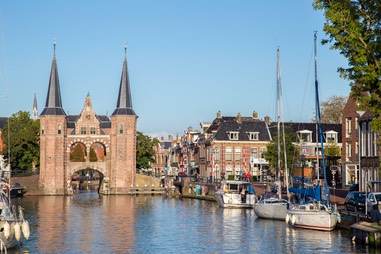
In the "Scheepvaart Museum" some beautiful examples of Frisian sailing ships, called skûtsje, are on display. The most famous of them is the Lemsteraark. It was used in the past for eel fishing. Holes in it’s body would allow water to get in and flow out, so the fish would keep alive and fresh by being transported across to Norway, London or France. For eels, who can breath fresh water from the inland lakes as well as salt water, this wasn’t a problem! When fishing trade declined, a lot of fishermen would take part in sailing races for which the Lemsteraark was ideal. By winning a race they could earn more money than they made in a week of fishing.
When the inland waterways froze in Winter, ice skates were used to keep in touch with other fishermen, family and friends.
Apart from anything boating, period rooms in Rococo and Biedermeier style and fashionable dress can be seen inside the museum. The material for the clothes might have been purchased from the first "C&A" shop, opened by the merchants Clemens & Brenninkmeijer here in Sneek.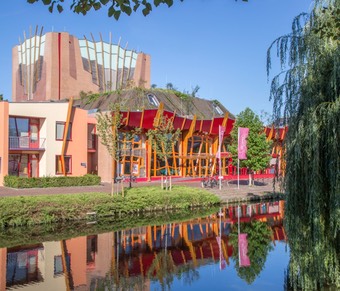
There are some beautiful buildings along the little canals of Sneek, like the 1478 Rococo style townhall and the amazing, modern theatre! 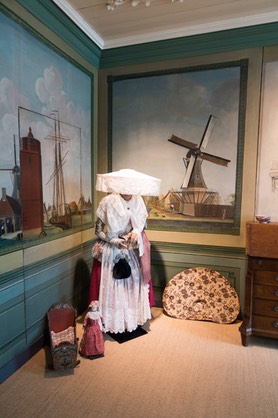
The old “waterpoort” (water gate) looks good in any light and is the emblem of Sneek. It is the only one of seven gates formerly providing access to town. In keeping with middle aged practise, the tower clock is set to run 5 minutes ahead of time. This ensured that upstanding citizens made it inside the city walls before the gate was closed at 8pm while keeping the late coming rabble out. 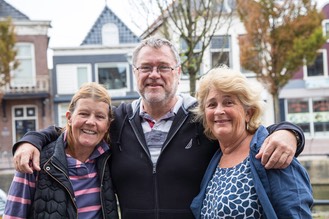
The Freshwater was moored right outside the waterpoort presenting us with a beautiful view and with direct access to the town centre - well they couldn’t keep this rabble out!
We had only just stepped onto the main drag, when Austin found two ladies to chat up. One of them being Annette whom we had only met a couple of days ago, the other Jill a friend from 2014 in Toul, France! Unfortunately it was Annette's and partner Malcolm’s last day before taking their barge “Rachel” (for sale, if interested) to the winter moorings, but we did catch up with Jill and Graham! Very jealous of both couples roomy barges with ovens and coffee machines etc. Graham made us a mean café latte and Austin followed up with his signature drink Apérol Spritz as we chatted about, well really anything till midnight!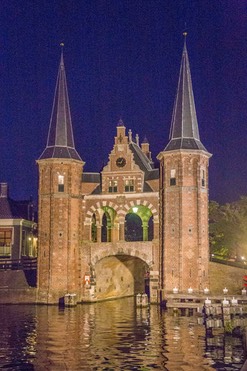
The day of our planned departure was so beautiful and sunny that we decided to stay on an extra day. We strolled around town, and then- call it alcohol withdrawal or curiosity- headed straight to the "Widow Joustra's Distillery".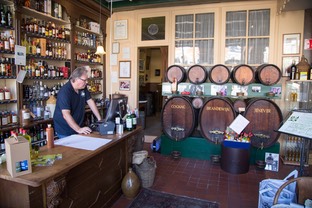 Here along with other liqueurs the grand, grand, grand, grand, granddaughter of the widow Joustra is making the famous Frisian Berrenburg after the old recipe from 1864. Upstairs in the house, where the old distillery is still set up, an array of diverse kinds of Berrenburg and other spirits was set up for free tasting. Knowing that the Frisian skippers used the Berrenburg as “medicine” we thought 'it can’t do any harm to try a couple'. Not too bad! A whole lot better than Jenever, we thought!
Here along with other liqueurs the grand, grand, grand, grand, granddaughter of the widow Joustra is making the famous Frisian Berrenburg after the old recipe from 1864. Upstairs in the house, where the old distillery is still set up, an array of diverse kinds of Berrenburg and other spirits was set up for free tasting. Knowing that the Frisian skippers used the Berrenburg as “medicine” we thought 'it can’t do any harm to try a couple'. Not too bad! A whole lot better than Jenever, we thought!
Thus in the swing of things we bought cinema tickets for Mamma Mia 2. A great thing about the Netherlands is, that movies and TV shows are not synchronised, but run in the original language with Dutch under-titles. As a result, most young Dutch speak English very well but with a distinct American accent. The film was great fun in spite of some bad singing and Cher looking like a China doll.
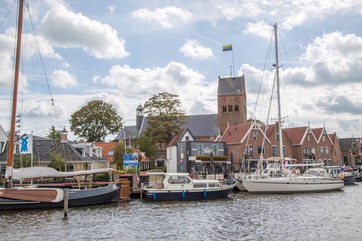
A place called Grou was the next port of call. The small size of town stands in no proportion to the 4 marinas and number of moorings. However, the centre has a nice village atmosphere with plenty of shops and restaurants. it is the home of the brothers Handsma who wrote Frieslands national Anthem. Yes, Friesland has it’s own anthem!
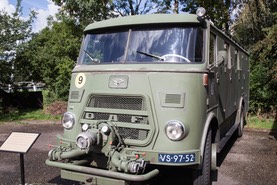
Really interesting is the "Bescherming Bevolking Museum."
I know, it’s a bit of a mouth full! But this is the biggest bunker commando post in the Netherlands, built around 1952 to protect the country from any outfalls of the Cold War.
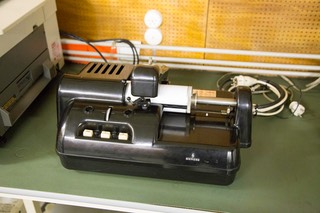 It was managed by the B.B., a civil organisation under the Minister of Internal Affairs.
It was managed by the B.B., a civil organisation under the Minister of Internal Affairs.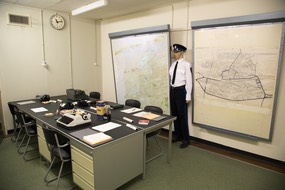 Although the organisation has lost it’s intended use after the fall of the Berlin Wall, it was also an emergency response centre for natural disasters. All the 1950/60s equipment is still in place and the guides are very knowledgable about the tense times during the Cold War and the operational procedures of the centre.
Although the organisation has lost it’s intended use after the fall of the Berlin Wall, it was also an emergency response centre for natural disasters. All the 1950/60s equipment is still in place and the guides are very knowledgable about the tense times during the Cold War and the operational procedures of the centre.